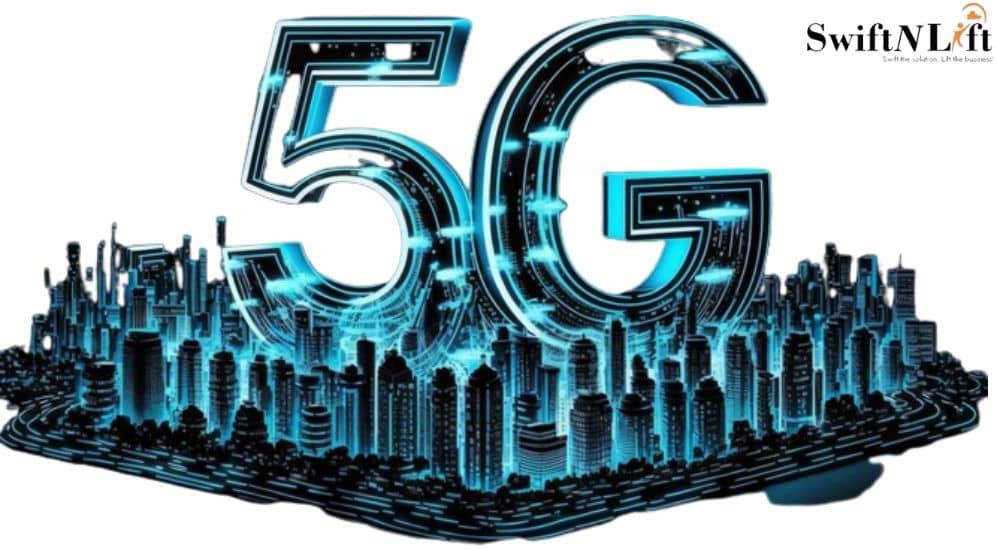
“5G: Where Speed Meets Dreams, and Connectivity Unleashes Imagination!”
In a world increasingly reliant on seamless connectivity and lightning-fast communication, the advent of 5G technology has emerged as a game-changer. The fifth generation of mobile networks promises to revolutionize how we connect, communicate, and interact with the world around us. In this long-read article, we delve into the fascinating realm of 5G, exploring its transformative capabilities, the underlying technologies, and the diverse range of industries it is set to revolutionize.
1.Understanding 5G Technology: Beyond the Speed
At its core, 5G technology is more than just a step up from its predecessor, 4G LTE. It represents a paradigm shift in the way we experience connectivity. While previous generations focused primarily on enhancing data speed, 5G introduces a holistic approach that prioritizes not only higher data rates but also lower latency, increased capacity, and massive device connectivity.
The backbone of 5G is built on three key technologies: millimeter waves, massive MIMO (Multiple-Input, Multiple-Output), and network slicing. Millimeter waves leverage higher frequency bands to enable faster data transfer, while massive MIMO harnesses multiple antennas to increase network efficiency. Network slicing allows for the creation of virtualized network segments tailored to specific applications, ensuring optimal performance and efficiency for different use cases.
2.The Promise of Ultra-Fast Speeds and Low Latency
5G’s most immediate and noticeable impact is its blistering speed. With theoretical download speeds of up to 20 Gbps, 5G has the potential to be up to 100 times faster than 4G, enabling users to download large files, stream high-definition videos, and engage in real-time gaming without any lag or buffering.
Equally transformative is the ultra-low latency that 5G offers, with response times as low as one millisecond. This reduction in delay is critical for applications like augmented reality (AR), virtual reality (VR), and autonomous vehicles, where split-second decisions and real-time interactions are essential.
3. Empowering the Internet of Things (IoT) and Smart Cities
The widespread deployment of 5G will pave the way for an explosion in the Internet of Things (IoT). With its ability to connect a massive number of devices, 5G will provide the infrastructure needed to support smart cities, intelligent transportation systems, and connected homes.
From autonomous traffic management to remote healthcare monitoring and energy-efficient infrastructure, the IoT ecosystem enabled by 5G will enhance urban living, optimize resource usage, and improve the overall quality of life.
4.Transforming Industries with 5G
5G’s potential reaches far beyond personal smartphones and IoT devices. Various industries are eagerly embracing this technology to drive efficiency, innovation, and productivity.
- Healthcare: Telemedicine and remote patient monitoring will become more viable with 5G, allowing healthcare providers to offer personalized care and timely interventions regardless of patients’ physical locations.
- Manufacturing: The manufacturing sector will witness a surge in automation and predictive maintenance, as 5G enables real-time data transmission, reducing downtime and increasing productivity.
- Entertainment and Media: Augmented reality (AR) and virtual reality (VR) experiences will become more immersive and accessible, changing the landscape of entertainment and media consumption.
- Education: 5G’s low latency and high-speed capabilities will revolutionize remote learning, enabling interactive virtual classrooms and collaboration on a global scale.
- Transportation: The implementation of 5G will be instrumental in the development of connected and autonomous vehicles, improving road safety and revolutionizing the transportation industry.
- The Challenges of 5G Implementation
Despite the promises, the widespread deployment of 5G does not come without challenges. The high-frequency millimeter waves used in 5G have shorter ranges, making the deployment of small cells necessary to maintain consistent coverage.
Additionally, the considerable infrastructure upgrades required for 5G deployment demand substantial investment and coordination among telecom operators, local governments, and other stakeholders.
Moreover, concerns about potential health risks due to increased exposure to electromagnetic radiation have sparked public debates and calls for more research to ensure the safety of 5G technology.
5.The Global Race for 5G Supremacy
The race to establish 5G supremacy has become a critical component of geopolitical competition in the digital age. Countries and regions around the world are investing heavily in 5G infrastructure to gain a competitive advantage in various industries and to position themselves as leaders in the technological landscape.
6. The Future of 5G: Unlocking Unprecedented Possibilities
As 5G continues to roll out and evolve, its potential impact on society is vast and awe-inspiring. From unleashing the full potential of IoT and enabling smart cities to transforming healthcare, education, and entertainment, 5G is the catalyst for a technological renaissance.
The advent of 5G technology marks a transformative milestone in the history of connectivity and communication. Beyond mere speed, 5G’s low latency and massive device connectivity open up a world of unprecedented possibilities across diverse industries.
As 5G networks expand, the vision of a fully interconnected world will become a reality. It is up to us to harness the potential of this revolutionary technology responsibly, addressing challenges while maximizing the benefits for humanity. The future of 5G is set to shape our lives, industries, and societies in ways we can only begin to imagine. Let us embrace this era of connectivity, communication, and boundless opportunities.

